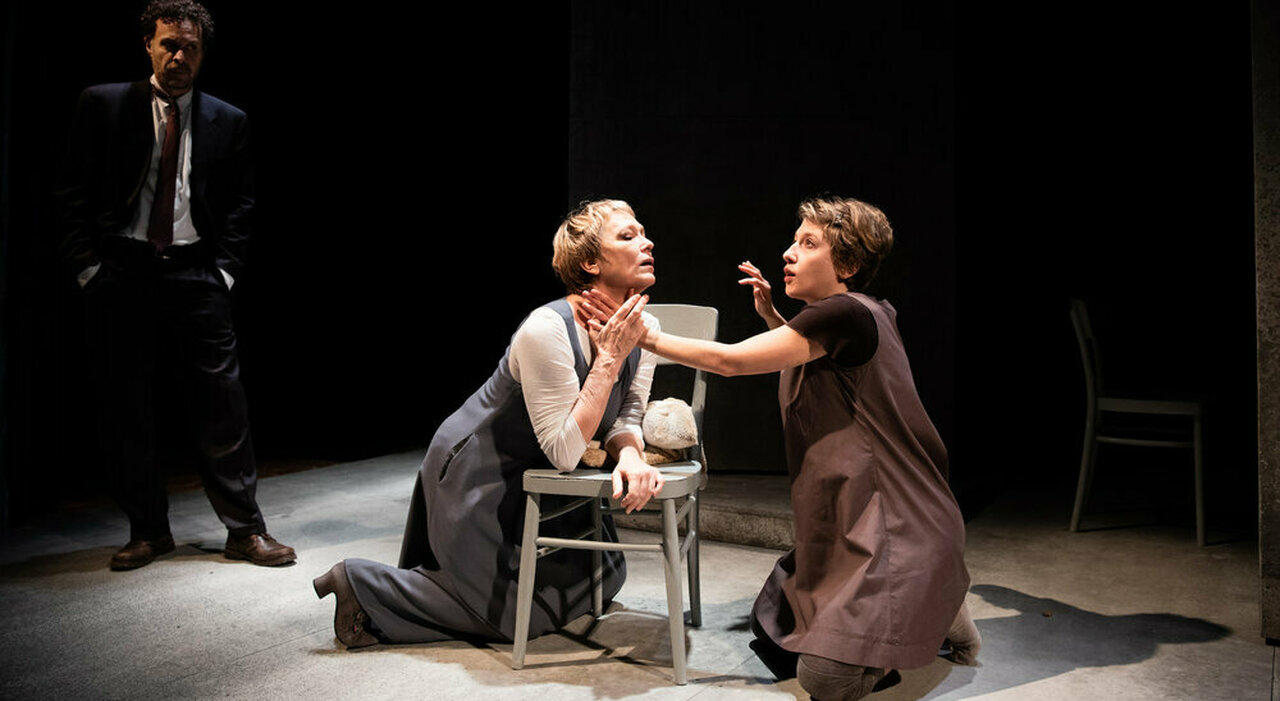Thursday 18 April 2024, 17:21
Arriving in Rome, after a tour throughout Italy, is the theatrical play 'Anna of Miracles', performed by Mascia Musy under the direction of Emanuela Giordano, and featuring Fabrizio Coniglio, Anna Mallamaci, and Laura Nardi. The show, produced by La Pirandelliana for the Lega del Filo d’Oro Foundation, will be staged from April 24 to 28 at the Teatro Il Parioli - Costanzo, with the following schedule: Wednesday 24, Friday 26, and Saturday 27 April at 9:00 PM; Thursday 25 and Sunday 28 April at 5:00 PM. The theatrical piece 'Anna of Miracles' is inspired by the true story of Helen Keller, who became deafblind around the age of two and, thanks to the intervention of her teacher Anne Sullivan, managed to learn to speak, read, study and have an autonomous life, just like Sabina Santilli, the founder of the Lega del Filo d’Oro. The work brings to the theater the then famous film 'The Miracle Worker' of 1962, directed by Arthur Penn.
The theatrical show, with a contemporary look, sheds light on what happens when a 'different' child arrives in a family, the one that is thought to only be born in other people's homes. What happens to a father and a mother who cannot communicate with their own child? Pity and anger, hope and a sense of defeat and inadequacy, love and hate are the conflicting feelings that dwell in the hearts of the girl's parents. And she, Helen, what does she perceive of what is around her? In front of the resignation of the parents who do not know how to deal with their daughter, just when they think they have no other choice but to take the daughter to an institute, Anna arrives in their home with a history of semi-blindness and abandonment behind her and will manage to teach Helen to express herself and her parents to communicate with her. 'The story of Anna of Miracles is a story capable of emblematically recounting the experience of all those families who come to us without hope after being told so many times that there was nothing to do with their children. It tells of their initial sense of defeat and helplessness and of that trust they place in the Lega del Filo d’Oro, which, step by step, in addition to assisting the children, provides support and a method to the families to manage and communicate with their children,' states Rossano Bartoli, President of the Lega del Filo d’Oro Foundation. But not only that, this theatrical work narrates the transition to sign language, an intangible asset of humanity, a linguistic revolution that has allowed opening a dialogue between those who speak and those who do not. Sign language, in this case tactile, will allow Helen to tell her story, to learn, to express feelings and needs, to grow and to be respected.
Helen Keller, who lived in the United States between the end of the 1800s and the 1960s, became deafblind at just under 2 years old, probably as a result of meningitis, managed to learn to communicate, read, study and have an autonomous life thanks to Anne Sullivan, who was also partially blind and, with patience, dedication, and authority, taught the girl to communicate with tactile sign language. Helen Keller, then in 1904, graduated with honors and as a lawyer engaged in many causes for the rights of people with disabilities and in progressive causes. She wrote an autobiographical book, 'Story of My Life', translated into 50 languages, the first of eleven other books and numerous articles that made her a famous author around the world. 'As soon as I read it, I strongly believed in this story and wanted to interpret it, I blocked the rights to the text and started looking for someone who could embrace this project with the same passion. I am happy to realize it together with the Lega del Filo d’Oro which has been taking extraordinary care of deafblind people for 60 years, and with a Lady of the Theater whom I deeply appreciate, Emanuela Giordano for the direction and original adaptation. I hold this show so dear because it is the story of a very great love, perhaps the greatest. It does not tell of a love between a male and a female, nor of that immense and crazy love between Romeo and Juliet, nor of that genetic and absolute love like that between a parent and a child, or like that between siblings, the love in this story is that universal and extraordinary love of someone who takes care of the weakest simply because they are 'different' and therefore need help and love more than anyone else,' comments Mascia Musy, the lead actress of Anna of Miracles.
And if Helen Keller's story is undoubtedly exemplary, in Italy on the same path we remember Sabina Santilli, who became deafblind at the age of 7 due to meningitis. Sabina learned Braille and Malossi, regaining the ability to communicate, read, and write. Over time, she would learn to communicate in 5 different languages and to be independent in every daily activity, and, with the support of a group of volunteers, she gave life to the Lega del Filo d’Oro which in Italy has been for almost 60 years the point of reference for deafblind people and their families and believes that no condition is so serious that it cannot improve with adequate education. The Anna of Miracles project was also born thanks to the commitment and involvement of Paola Severini Melograni, a journalist and director of the Angelipress Agency, who has been dealing with social communication and solidarity themes on various fronts for years.
© ALL RIGHTS RESERVED
This article is automatically translated
